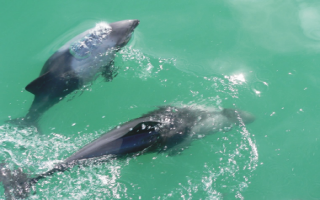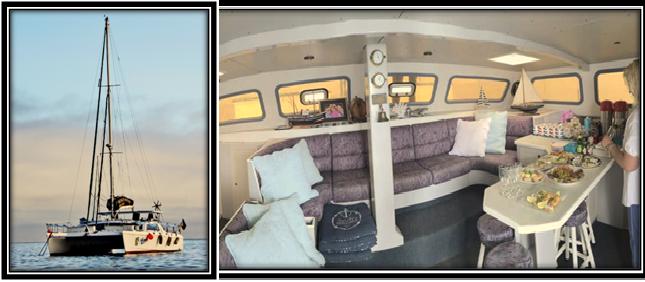General information about the Kriegsfischkutter (KFK)
1942 the serial production of the KFK started as a result of the strong need of the German navy to build up a flotilla.
1072 of these strong and versatile boats were ordered, foremost of the Burmester KG Svinemuende. In addition, a number of wharfs in other countries got orders:
17 wharfs in Sweden, 12 in the Netherlands, 6 in Belgium, one in Ukraine, two in Bulgaria and 2 in Greece. 612 of the ships with 110 t and 24,00 m Loa were finished, and at least 554 of them were on the front.
The cutters were divided into 9 groups, from type A (12 m Loa) to type G (24 m Loa). The lines and the hull design were optimized with stream models in the Schiffsbautechnische Versuchsanstalt in Wien, STVW by order of the Abteilung fuer Technik in der Reichsanstalt fuer Fischerei. The type G cutter proved to be the model to concentrate on and evoluted to “Reichsfischkutter G”. The optimized hull shape was called “Wiener Modell 475a” and build as a composite-hull (wood on steel). In the beginning oak was used for the planks of the hull, but because of shortage pinewood was used later. The skeleton was formed by 49 steel ---spanten, then the planking was fixed from three places on each side simultaneously. That way up to one boat per day could be finished in Burmester Werft in Svinemuende. For the first KFK 52.000 man-hours were needed, while the fifth ship needed 36.000 hours, and as the number of finished ship increased the man-hours could be reduced to 28.000 – 29.000 per ship. About 50 men worked on and around a ship at the time, per KFK 22 fm oak and 70 fm pine were used, along with 17 tons of steel. As ballast 1024 cement-bricks of 10,4 kg each were used. The propeller had a diameter of 1300 mm and a ---stigning of 830 mm. The entrepeneur Hugo Stinnes had good contacts to Sweden, and with his help Regierungsrat Dipl. Ing. Eduard Eisenhart could close a contract with the neutral Sweden to produce 45 KFKs in 17 small Swedish boatyards. Officially these cutters were built for the civil fishing industry, so they were built and delivered with full fishing rig. For some of the boatyards in Sweden these cutters were the biggest boats they have ever built. KFK 93 to 137, the ones built in Sweden, were delivered between 12.1.43 and 10.3.44, and all of them were taken to Burmester Werft at once, to remove the fishing rig and convert the vessels for war service. KFK 1 – 157 were double enders, thereafter they were built with as Platt GATT to make the work with the mining gear easier.
The 45 Swedish cutters were equipped with “civil” propellers. Traditionally warships were equipped with left going propellers, while civil ships were right going. Because of shortage of materials this was not changed in the conversion to warships, and maneuvering the ships with a “wrong going” propeller was a problem to some skippers in the beginning.
The KFK were designed from the start to be convertible to fishing vessels after the war.
When the war was over, the winners of the war took some of the KFK as price. USSR got 140, the Netherlands 5, France 26, Greece 4, Sweden one and Norway got 9 ships.
Heute heißt sie „MS Lilly“, doch vor über 70 Jahren trug sie den Namen „KFK51“ - und war ein kleines und getarntes Kriegsschiff während des Zweiten Weltkrieges. Über Lillys Geschichte könnte man ein Buch schreiben, deshalb tat es Hans Möller leid, als es das Gerücht gab, sie soll aufgeschnitten und an Land gebracht werden. „Es ist der letzte KFK, der noch seinen Originalmotor hat“, sagte Möller, der das Schiff vor wenigen Wochen gekauft hat. Zudem: Von den über 1000 Kriegsfischkuttern, die während des Zweiten Weltkrieges gebaut wurden, gibt es heute etwa noch 20.
„Lilly“ ist vor etwa drei Jahren in Namibia angekommen. Damals gehörte das Schiff dem deutschsprachigen Paar Beate Schwippert und Günter Hertz, das auf „Lilly“ mit seien beiden Schäferhunden Bronco und Brava von Deutschland nach Namibia gefahren waren (AZ berichtete). Nach Beate und Günters Abenteuer vor wenigen Jahren lag „Lilly“ im Hafen von Lüderitzbucht. Vor vier Monaten gab es dann das Unglück: Während der besonders stürmischen See wurde sie von zwei anderen Schiffen „zerdrückt“ und hat seither vier Löcher im Rumpf über der Wasseroberfläche. „Dennoch ist sie nicht mehr schwimmfähig“, so Möller. Er habe sich erkundigt und letztlich beschlossen, das Projekt anzupacken. Er wolle „Lilly“ restaurieren und will sie dazu demnächst an Land bringen. Was danach aus „Lilly“ wird, kann Möller noch nicht sagen, dennoch sieht er Potential. Vielleicht wird sie ein Restaurant, ein Museum oder ein Gästehaus. Vielleicht werde er sie nach Walvis Bay bringen. Obwohl er „Lilly“ gern restaurieren will, will er die endgültige Entscheidung erst in den nächsten Tagen treffen. „Es muss sich lohnen“, sagte er.
Etliche Werften in Europa bauten zwischen 1942 bis 1945 die als „normale“ Kutter getarnten Schiffe, die danach auf deutschen Werften zu „Kriegsfischkuttern“ oder kurz KFK umgerüstet wurden. Insgesamt 554 dieser KFK kamen zum Einsatz - mindestens 135 sind während des Zweiten Weltkrieges gesunken. „Lilly“ trug damals den Namen „KFK51“, bis sie im Jahr 1946/47 entmilitarisiert wurde. 1986 erfolgte „Lillys“ Umbau zum Angelkutter. Besonders an „Lilly“ ist, dass sie der einzige KFK ist, der noch seinen originalen Dieselmotor des Typs MODAG mit fünf Zylindern (Zweitakter) besitzt. Das Schiff ist 24 Meter lang und wiegt etwa 135 Tonnen.
Erwin Leuschner
Zahlen und Fakten
Baujahr: Ablieferung November 1942, danach Kriegseinsätze in Norwegen, Bergen, Narvsk
Schiffstyp: ehemals KFK, jetzt Hochsee-Segelkutterjacht
Bauwerft: Ernst Burmester Schiffswerft KG, Swinemünde-Ost
Baumaterial: ursprünglich Eichenplanken auf Stahlpanten; Neu-Beplankung des Rumpfes mit unterschiedlichen Hölzern
Umbauten: ca. 1946/47 Entmilitarisierung, Rückbau zum Fischkutter bei HDW Kiel; danach verschiedene Fischerei-Umbaumaßnahmen bis 1980; etwa 1986 erster Umbau zum Angelkutter; etwa 1991 weitere Modernisierung mit Unterkünften; in den 90ern weitere Umbauten zur komfortablen Kutterjacht
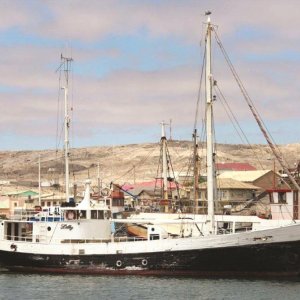
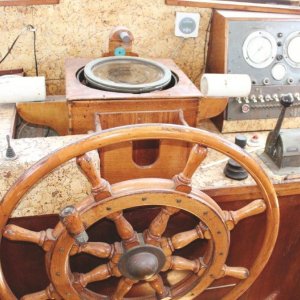
Article from the AZ Newspaper
Old warship to become tourist attraction
on Wed, 11/13/2013 - 20:00
‘Captain Hans’, a well-known coastal tourism entrepreneur Hans Möller is known, is at it again.
Möller, the owner of Sunsail Catamarans in Walvis Bay and Air Hans Safaris, confirmed this week he acquired a vintage warship from a vessel owner at Lüderitz, and intends to transform it into another waterborne tourism attraction. The vessel, MV Lilly, was built in Nazi-occupied Norway and entered service as a so-called “Kriegsfischkutter” in November 1940. Some 1 050 Kriegsfischkutters were built by Adolf Hitler’s Nazi-regime between 1940 and 1942 at various shipyards across Europe. Only 60 are left worldwide, of which only 20 are afloat. The Lily is the only vessel left with the original Modag five cylinder two-stroke diesel engine.
The vessels were mainly used as troop carriers, disguised as fishing vessels, but were also used as minesweepers. Hitler believed his fleet of Kriegsfischkutters would return as a fishing fleet after Germany’s defeat of the Allied Forces. After Germany’s surrender, the fleet of Kriegfischkutters were tied up, scuttled or decayed in fishing harbours. Many of the vessels were sold to private individuals and former soldiers. Today, less than a tenth of the vessels remain, and Möller was fortunate to have bought it from an old friend who resided with the vessel at Lüderitz.
Möller explained the vessel can comfortably accommodate 75 and more guests on its deck, and has a saloon, six cabins and other amenities, with an enormous tourism and hospitality potential. For now, Lilly would remain at Lüderitz, where Möller hopes to restore her to her former glory before making final decisions whether the ship would relocate to Walvis Bay, or stay to entertain visitors and locals in this southern fishing town. At 42m long, Lilly weighs an enormous 135 tonnes. She boasts a hotel licence, a liquor licence, as well as a museum licence, so the sky is the limit for Möller’s entrepreneurial imagination of transforming the vessel into a tourism jewel.
Namibia Dolphin & Seal Catamaran Cruises
Namibia
+264 (0)81 209 8169

 Child friendly
Child friendly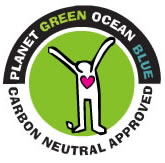
 reg no ACT 00055
reg no ACT 00055
